The Tea Plant Summary
Green tea, black tea, white tea, yellow tea, and puerh all come from the same plant (Camellia sinensis). The classification depends on how its processed more so than how it's grown or what subspecies is used.
By going through varying levels of oxidation, the leaves change flavor, color, and chemistry. This is why black and green tea tastes so different from each other, and in fact, even have some differences in medicinal use.
Humans have used this plant for thousands of years. Its use dates back to at least the Shang dynasty in China 3000 years ago.
It has a wide range of health benefits from antioxidant, stimulant, cardioprotective and general tonic effects.
Aside from water, tea is the most popular drink in the world.
There are several varieties of tea, grown in many different countries around the world, but the vast majority of tea comes from the Assam variety in India or the sinensis variety in China.
Japan, Korea, and Taiwan are also large producers of tea, and each country has its own signature style of growing and preparing tea.
What is Tea Used For?
Tea is primarily used as a low-dose, long term preventative rather than an actual medicinal treatment. Since tea should be brewed at lower temperatures, and for a short amount of time (if taste is the main desired outcome), the medicinal components in the brew are not in high supply. Therefore a gradual, long term dosing is necessary for any effect to take place.
The long term effects of tea mainly involve the prevention of age-related cardiovascular or neurological disease, as well as diabetes, obesity, and cancer.
In higher doses, the plant will be very bitter and high in the astringent, yet potent medicinal phytochemicals known as catechins, which have a wide range of effects. This form of tea is not pleasant to taste in any way but is useful as a medicine for both chronic and acute conditions.
Other uses of tea involve the concentrated extraction of L-Theanine from the shade grown species. This amino acid isomer has had a lot of research done recently to investigate the full range of cognitive enhancing, cancer-fighting, and cardiovascular toning capacity, where it has seen a lot of promise.
Traditional Uses of Tea
Traditional Chinese Medicine
The earliest clear reference to the medicinal use of tea was during the Tang dynasty (750 AD). Through the coming ages, tea became more popular, and in the 800s The Classic of tea (written by Lu Yu), was written, which incorporated both Taoism and Confucianism and outlined the ceremonies associated with teas consumption. In the 17th century tea found its way to Europe, where it was widely accepted, and although arriving to Europe around the same time as coffee, it dominated the market [3].
Green tea is considered to prolong life and has been used to treat headache, body ache, indigestion, depression, low energy, obesity, and hair loss [3].
Commonly used ceremonially in many cultures, as a form of meditation, or social events. Such ceremonies include the Chinese gongfu ceremony, Japanese tea ceremony using matcha tea (also called “the way of the tea”), or various other cultural versions of the ceremonial consumption of tea. The ceremony is often designed to produce both high quality tea extraction, as well as offering a form of meditation to lower stress, and promote awareness.
The flowers of Camellia sinensis have also been considered healthful since ancient times, though is less talked about today. Chinese folk remedies using tea flowers includes inflammatory diseases [2].
Even in modern times tea is considered the most popular beverage in the world aside from water [12].
(Green tea)
- Taste: Bitter and sweet [15].
- Energy: Cold [15].
- Channels: Heart, liver, Kidney, stomach, spleen [15].
- Direction: Descending
- Actions: Cools heat, drains damp-heat, drains fire [15].
- Contraindications: Cold or spleen deficiency [15].
(Black tea)
- Taste: Bitter and sweet [15].
- Energy: Warm [15].
Types of Tea
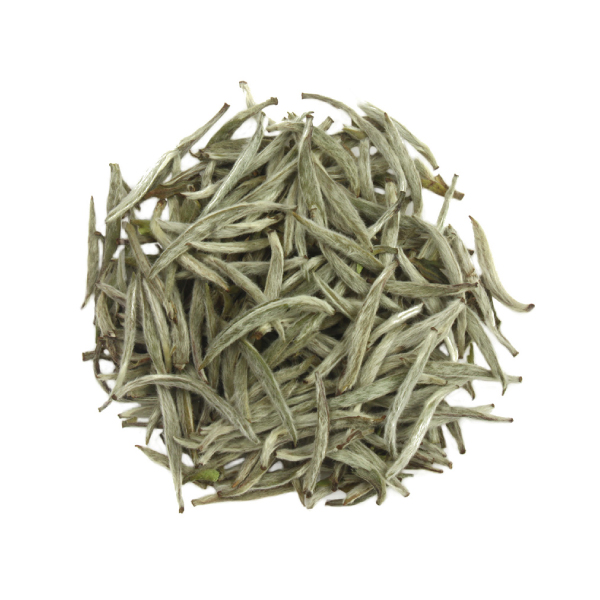
White Tea
learn More
Green Tea
learn More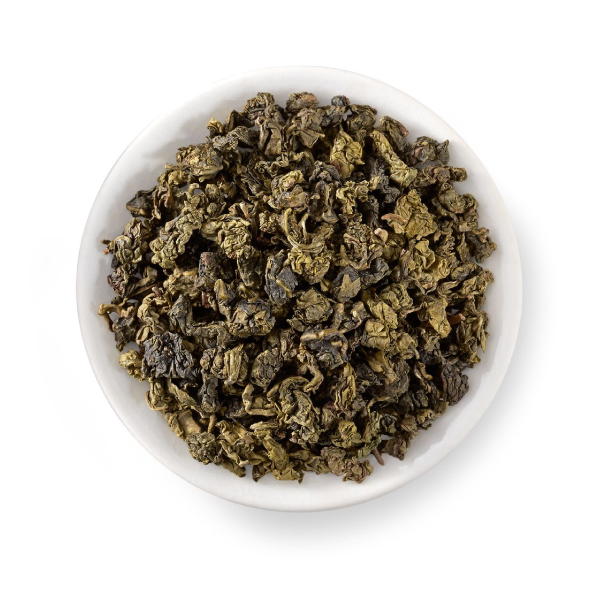
Oolong Tea
learn More
Black Tea
learn More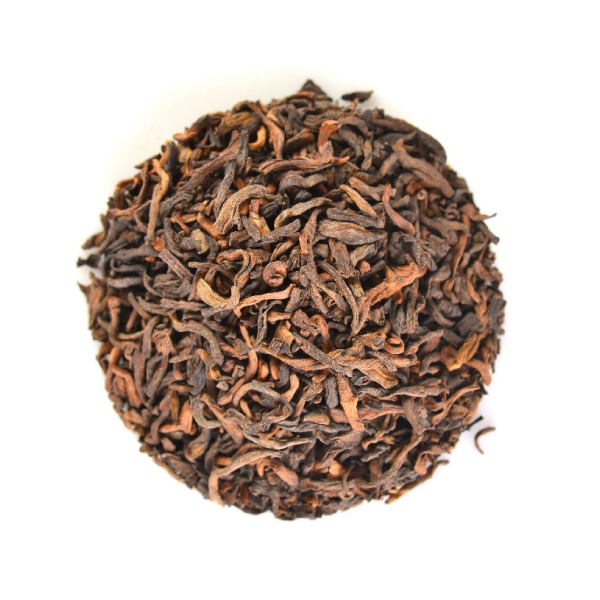
Puerh Tea
learn More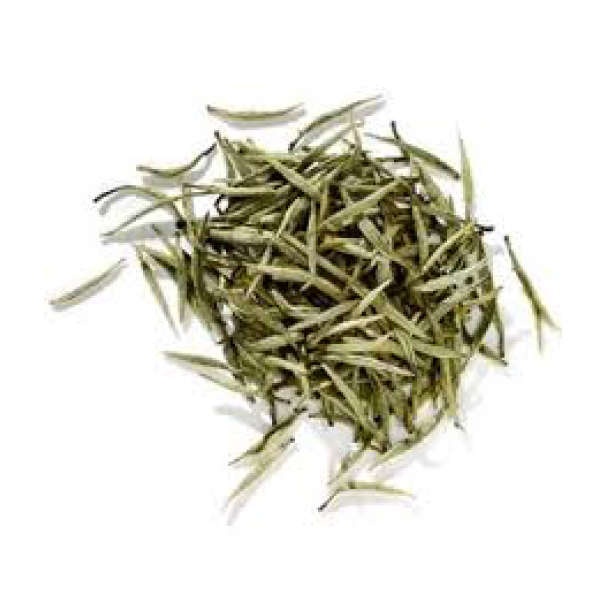
Yellow Tea
learn More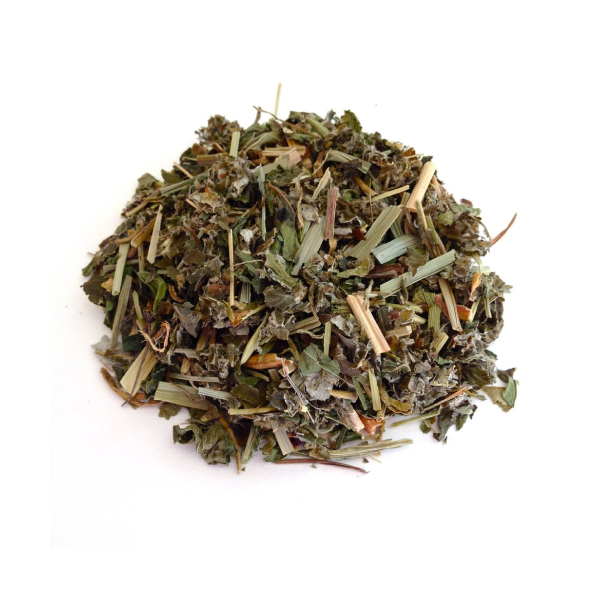
Other Teas
learn MoreA Note Regarding Dosages of Tea
The most common way tea is used is for its flavor — the health benefits serve as an added bonus. Teas used in this way are brewed with water that has not yet boiled (around 80 C), for only a few seconds (2 minutes maximum).
When using this herb therapeutically — especially for the epicatechin content — the doses need to be much higher. Teas used in this way are brewed with hot water for long periods of time to extract as much of the medicinal compounds as possible. This provides a very bitter, astringent, and unpleasant taste.
The therapeutic dose of tea is very different from a normal cup of brewed tea. Many of the medicinal components of tea have poor solubility in water and a bitter taste. Short brewed teas tend to have a better flavor, but lack most of the medicinal components. Long steeps in boiling water or whole herb extracts will provide the most therapeutic benefit.
For advice on brewing tea for the best flavor, visit our guide to tea.
Herb Details: Tea
Herbal Actions:
- Antioxidant
- Diuretic
- Neuroprotective
- CNS Stimulant
- Chemoprotective
- Hypocholesterolemic
- Antiatherosclerotic
- ACE inhibitor (mild)
- Hypoglycemic
- Antibacterial
- Antiviral
- Antitumor
Therapeutic Dosing
- (1:20 Infusion)
250 mL - View Dosage Chart
Part Used
- Leeaves, stems, and unopened buds
Family Name
- Theaceae
Distribution
- The tea plant originates from Southeast Asia, including Sri Lanka, India, and China. It is widely cultivated and can grow as high as 2000 m above sea level. Each region where it is cultivated tends to have its own cultivar.
Constituents of Interest
- Catechins
- L-Theanine
- Caffeine
Common Names
- Tea
- Green Tea
- Black Tea
- Oolong Tea
- Puerh Tea
- Yellow Tea
- Red Tea
- Matcha
- Cha
- Chai
- Thé
CYP450
CYP2D6
Nature/Taste
Unknown
Pregnancy
Caffeine is recommended to avoid while pregnant.
Duration of Use
- Long-term use of this herb is acceptable.
Botanical Information
The Theaceae family contains about 7 or 40 genera (depending on what method of circumscription is used. The family mainly consists of trees, which includes the Camellia genus.
Camellia sinensis is a small evergreen tree, reaching 16m in height, though is often pruned much shorter in cultivation. Leaves are lanceolate to obovate and are 4-15cm long depending on the variety. The flowers are white to pink [3].
Green tea, white tea, oolong, and black tea all differ in how they are processed. That is how much they are allowed to oxidize before the process is stopped by the addition of heat to kill the enzymes catalyzing the oxidation process. The polyphenol oxidases condense the polyphenols in the leaves, changing the qualities of the tea as it oxidizes. Green and white teas are minimally oxidized, oolong is in the middle to varying degrees, and black tea is allowed to oxidize the most, resulting in polyphenols condensing and forming polyphenol dimers, and polymers [12].
Once the leaves are subjected to heat, this oxidation process stops, and the leaves are then dried or processed further, which will maintain the polyphenol content as is, without further oxidation taking place. The main difference between Japanese style teas, and Chinese teas are the way this heat is added. Chinese style processing (usually) includes pan frying, whereas Japanese processing mostly involves steaming [6, 13].
Other differences in these famous teas as well as other teas from different parts of the world, are due to local climate, and soil conditions, which have a profound effect on the flavor profile of the teas. The variety used also plays a part (sinensis, assamica, or cambodiensis are the main ones but there exists others as well).
Puerh tea is another kind of tea, that has had its oxidization process halted, but is allowed to ferment via separate organisms, through either natural processes (raw puerh), or in a modern, cultured environment (cooked puerh). This process adds another set of qualities and chemical constituents to the leaves, and produces a very unique flavor profile, and health effects when compared to unfermented teas.
Habitat, Ecology, & Distribution:
Tea originates from Southeast Asia, Sri Lanka, India, and China, but is widely cultivated worldwide in tropical, and subtropical regions.
Cultivation occurs up to about 2000m in altitude. To cultivate this plant effectively, there needs to be consistently warm, humid, frost free conditions [3, 12].
It's thought that tea originated in China, and only after it became popular in India was it discovered that a separate variety grew naturally there — which has since become heavily cultivated in the region due to better adaptability to that hot, and inconsistently wet region of the world.
Harvesting, Collection, & Preparation:
Camellia sinensis is usually grown between 300 and 2000 m in altitude, and tea grown at higher levels is generally considered to produce a better flavor. Other considerations are rainfall (200-230 cm/year), and temperature (10-24C) [13].
When preparing Camellia sinensis as an infusion (tea), it has been noted that higher temperatures (100C) have been shown to extract more of the polyphenol content from the leaves and buds [6], however traditionally this has been frowned upon, as it is considered to negatively affect taste, likely due to the increased absorption of such bitter constituents as tannins and xanthine alkaloids. Generally, tea should be infused with water at temperatures of between 50-80C to maintain the best possible flavor, although this varies mildly with different teas (ex black teas and puerh do well in higher steeping temperatures such as 90-100C). Steeping time also varies, but generally between 1-5 minutes is best.
Lighter, less oxidized teas such as green and white teas would be best on the lower end of this range — while darker, more oxidized teas like black and dark oolongs would do well with a longer steeping time.
However personal preference plays a significant role here as the infusion will become more bitter in flavor the longer it steeps.
Some cultures and traditions (such as gongfu tea ceremony) recommend steeping for only a few seconds but reuse the leaves many times.
If the health effects are considered most important, it may be beneficial to use higher water temperatures, higher infusions (standard medicinal infusion ratio for any herb is 1:20 for 5-30 mins) and longer extraction times to extract more of these constituents.
Tea brewed in this way will be bitter and astringent.
Pharmacology & Medical Research
+ ACE Inhibition
Catechins from Green tea (primarily EGC), have been shown to significantly inhibit angiotensin-converting enzyme (ACE). However, the absorption of these polyphenols is poorly understood. It is possible that not enough of these polyphenol dimers and trimers are absorbed to produce therapeutic effects [12].
+ Atherosclerosis
Green tea catechins have been shown to produce positive effects on endothelial, and overall vascular function. This effect is likely to do with the ACE inhibitory effects also noted [12].
Due to poor absorption of catechins, more research is needed on the metabolites of these polyphenols, to further understand the mechanisms taking place.
+ Antibacterial
The antibacterial activity in Camellia sinensis aqueous extract was noted to be highest in green tea, and lowest in black tea, but present in all samples. This effect is likely due to the catechin content. Its action has been reported to be effective on gram-positive bacteria [6].
+ Hypocholesterolemic
The anti-cholesterol effects of green tea were suggested to be due to the catechins in long term cholesterol lowering actions, through both reduced cholesterol absorption, and increased cholesterol excretion through fecal matter. "Green tea catechins have also been shown to increase the gene expression of bile acid synthesis" [12]. These effects on cholesterol would have a positive impact on the long term health of the vascular system. However, the short term improvements are likely due to other constituents.
Puerh tea has a different method of lowering cholesterol. This style of Camellia sinensis processing allows secondary fermentation to change the chemical makeup of the plant. One of the changes involves the addition of statins. Synthetic statins are commonly used in hypercholesterolemia, and as a life long treatment option after cardiovascular events (heart attacks). The addition of these chemicals have significantly reduced morbidity and mortality associated with cardiovascular disease, however often produce such adverse effects as myopathy or rhabdomyolysis [9], as well as some more recently discovered side effects such as neurological dysfunctions.
Therefore it is crucial that new, safer statin medications are discovered, and puerh offers an interesting alley to investigate further. It is one of the most common tea styles available, and due to the new techniques in processing, the tea only takes a few months to process rather than a few years. This allows the price to stay affordable, and sourcing is easy.
Puerh tea has very low toxicity and can be drunk throughout the day, and over long periods, which may suggest this style of Camellia sinensis a very viable option for prevention of hypercholesterolemia, and its associated pathologies such as atherosclerosis, and cardiovascular disease. More research is needed on the safety of this product, and its effectiveness in vivo on cholesterol levels.
+ Diabetes
EGCG (a catechin), as well as tannins and theaflavins (to a lesser extent than EGCG) were shown to produce anti-diabetic effects through an improvement in insulin sensitivity (reported to be as much as 13% in some cases), both in vitro and in vivo [12].
+ Inflammation
The catechin EGCG found in high amounts in green tea has been shown to produce anti-inflammatory effects through cytokine inhibition. Other catechins in green tea have been noted to regulate NADPH oxidases which are related to the pathophysiology of stress-related processes. [12].
In a study done investigating the effects of Camellia sinensis flowers on inflammation found that the aqueous extract was able to produce significant anti-inflammatory effects on acute inflammation, as well as immunological liver inflammation in vivo. These actions were suggested to be due to polyphenol content [2].
+ Antimutagenic
Green tea has been shown in vitro and in vivo to produce genoprotective effects on DNA through its antioxidant profile [7]. This supports the daily use of green tea as a general health enhancer.
+ Antioxidant
Camellia sinensis leaves, and flowers have been shown in multiple studies to provide strong antioxidant effects in vitro and in vivo. Both oxidized, and unoxidized leaves (green, oolong, and black) have been shown to produce these effects in various studies [2, 6].
The antioxidant effects of Camellia sinensis have been suggested to be mostly due to its polyphenol (catechins, and related metabolites) content [2].
One study investigated the correlation between various polyphenol contents of various levels of processing in Camellia sinensis leaves (Black, oolong, white, yellow, and green teas), and found that as the catechin EGCG was broken down during the oxidization process, ECG levels increased [10].
This same study noted that total polyphenol level in black tea was the lowest at 14%, with green containing the highest at 23% (the study did not include white tea), oolong varied greatly in its samples, but researchers reported the mean value at 17% polyphenol content.
This correlated with the studies findings for oxygen radical absorbance capacity (antioxidant profile), showing that green tea produced the highest, followed by oolong, and finally, black teas.
+ Diuretic
Sri Lankan black tea Camellia sinensis L. has been shown to produce pharmacologically safe, mild diuretic activity.
This effect has been noted to be due to multiple mechanisms:
- Increased urinary Na+ output
- Inhibition of aldosterone secretion
- Inhibition of carbonic anhydrase activity
- Thiazide-like diuretic action.
Interestingly, these effects seemed to correlate with the elevation with which the plants were grown, with higher elevation plants producing fewer diuretic effects, and low grown plants producing higher diuretic effects. However, all can be used effectively as a diuretic [8].
+ Neuroprotective
Green tea extracts have been shown to produce neuroprotective effects in such neurodegenerative disorders as Parkinson's disease. Its effects were suggested to be due to the anti-inflammatory, and antioxidant profile of green tea's catechins [11]. It is possible that the theanine content played a role in these effects as well. However, more research is needed.
Phytochemistry
Catechins:
About 70% of green tea's polyphenol content is catechins [12]. EGCG (Epigallocatechin-3-gallate) (EGCG) is one of the most abundant catechins in green tea and is considered one of the most active constituents of green tea as well, accounting for about 32% of the plant's antioxidant profile (AP). One cup of green tea is suggested to contain 20-200mg of EGCG [12].
Other catechins contained in green tea include epicatechin ((-)-EC)(5-7% AP), epigallocatechin (EGC)(9-12% AP), and epicatechin-3-gallate (ECG)(9-12% AP). Comparatively, black tea generally has about 30% of the catechins found in green tea and is found mostly in the form of thearubigins, theaflavins, and other complex condensation products [12].
Catechins are mostly absorbed in the intestine, specifically in the ileum and jejunum. Peak absorption is about 1.5-2.5 hours after consumption, however absorption is quite low (about 5% of consumed catechins will appear in blood plasma on average), however during microbial interaction in the colon, catechins are often broken down into compounds such as valerolactones, which are absorbed much later (about 7.5-13.5 hours later) [12].
Generally, catechin metabolites have been shown to produce limited activity compared to their pure form. However, a select few of the metabolites are noted to have similar, higher, or a completely separate activity. These polyphenols have been discovered not to accumulate in blood plasma or urine, and have been suggested to be excreted via the biliary duct [14]. Catechins can also be found in red wines, grapes, apples, and chocolate [12], as well as guarana (Paullinia cupana).
Caffeine:
The caffeine content of Camellia sinensis varies from < 0.02.
The young leaves of the first shoots contain relatively high caffeine concentrations, whereas the stems and roots contain very little [3].
Caffeine Content by Type:
White tea (140mg/L caffeine)
Green tea (130 mg/L caffeine)
Oolong, then black (89 mg/L caffeine)
Comparing Different Types of Tea
Green Tea
Green tea leaves have a higher caffeine content than black tea leaves, and about the same (very slightly less) as white, though confusingly, the infusion is often recorded as the opposite.
Other comparisons include green teas higher quercetin, flavonoid (catechin), and kaempferol contents, than white and black teas, but has the lowest gallic acid [3].
The chemical composition of green tea by dry weight is as follows: 15-20% proteins (enzymes), 1-4% amino acids, 5-7% carbohydrates, 5% minerals/trace elements and xanthic bases (caffeine, theophylline), pigments, sterols, vitamins, and volatile compounds, though these levels can vary greatly depending on growing conditions, strain, and processing techniques [3].
Gyokuro is a specific style of tea that involves covering the tea plants in the shade for the final 2 weeks before harvest, this results in lowered catechin content in the leaves, while increasing theanine, and caffeine. This will result in less bitter tea and allows the sweetness of the leaves to appear more intense. The increased theanine may also provide psychological effects based on its pharmacology. Theanine is an amino acid and is mildly psychoactive. It has been regarded highly as a nootropic substance.
White Tea
White tea is considered semi-fermented (semi-oxidized) and contains about the same caffeine content as green (in the leaves and the infusion), and a similar catechin content as well [3, 5, 12].
Black Tea
Black tea is considered fully-fermented (fully oxidized) and has higher gallic acid and higher caffeine in its infusion when compared to both green and white teas.
This information is controversial; however, in that caffeine is often listed as being highest in white tea, and lowest in black [3].
It should be noted that because black tea is generally steeped hotter, and longer, this may play a role in why the caffeine content of this tea is usually recorded as higher.
This is why dry weight constituents, as well as average infusion levels of these chemicals, are equally important. For someone drinking green tea for its suggested lower caffeine content, but uses boiling water and prolonged steeping times, may, in fact, be receiving more caffeine instead of less.
For example, matcha (Japanese powdered green tea), is mixed into a solution, and the whole leaf is consumed including fiber and all of its constituents. This tea is often considered to have the highest caffeine content as a result of all of the components being consumed.
Caffeine (and other purine alkaloids) have a low solubility in water, and therefore when consumed as an infusion, avoid extracting a lot of the caffeine content in the leaves, and therefore less concentrations will be measured in the liquid.
As the temperature increases, it improves as a solvent and allows more caffeine to extract into solution, longer steeping times will also increase this.
When preparing black tea, the higher temperatures, and longer steeping times will directly affect the amount of caffeine in the final brew.
Due to the oxidization process black tea goes through, constituents like therarubigins, theaflavins, and other oxidized phenolic compounds, are included, and a relatively higher concentration of fluoride is noticed [3, 5].
Puerh Tea
Puerh is a unique tea, with an extra fermentation process. This process is a true fermentation, compared to black or oolong teas oxidization process that is often referred to as fermentation misleadingly (because it is not fermentation by definition).
There are generally two ways to go about fermenting puerh.
“Cooked” puerh is a newer process developed to speed the process to a few months (rather than years), where the leaves are piled and cultured in a controlled environment.
“Raw” puerh is the traditional method of aging the tea leaves (often in caves or other moderately humid locations), for decades.
Some consider the older the puerh, the better the flavor.
In a study investigating the organisms responsible for this fermentation [10], researchers found a vast variety of organisms.
A few includes fungi such as Absidia, Arxula, Aspergillus, Blastobotrys, Cladosporium, Corynascus, Dictyuchus, Emericella, Eurotium, Eutypella, Gliocladium, Fusarium, Hypocrea, Leptosphaeria, Mucor, Neurospora, Penicillium, Peziza, Phanerochaete, Plectosphaerella, Pichia, Rhizopus, Saccharomyces, Septogloeum, Stemphypium, Syncephalastrum, Talaromyces, Trametes, and Trichoderma, as well as bacteria from such genera as, Actinoplanes, Streptomyces, Paenibacillus, and Bacillus.
The most dominant species were noted to be very closely related to Bacillus coagulans. The sample used in this study went through the “cooked” processing style [10].
Due to this secondary fermentation that takes place during processing, by this massive variety of organisms, this tea contains an abundant source of GABA [4] and statins that the other processing techniques simply will not provide.
The color is more of a velvety red, and the flavor is much smoother as well. More research is needed to get a better idea of what changes are taking place under different cultures of microorganisms during fermentation, and how this changes the medicinal value of this amazing plant.
It would be interesting to see some research investigating what strains of bacteria and fungi produce higher GABA, or statin levels for a different medicinal benefit or flavor.
Clinical Applications Of Tea:
Tea is only used clinically in high doses and concentrations, not in the form commonly consumed as a leisure beverage. The catechin content is potently antioxidant and can be used for a wide range of conditions involving this mechanism.
Additionally, the L-Theanine content of tea, especially shade grown species taken in high doses such as a liquid extract or matcha green tea, is useful for treating neurological conditions, improving cognitive performance, and treating cardiovascular disease of different kinds.
Cautions:
Caution advised for those sensitive to caffeine.
The catechin content of tea may bind to and inhibit the availability of other drugs.
Safety& Toxicity
This herb contains xanthines in its many forms, though, due to low saturation during infusion, and low solubility of xanthine alkaloids, the caffeine content is much lower than a cup of coffee (roughly 50%).
Nevertheless, this alkaloid (and other purine alkaloids) are present, and those sensitive should use care, or avoid consuming altogether.
Caffeine has been shown to cause acute hypertensive effects but does build tolerance after prolonged intake. However, if severe hypertension is present, it is advised to avoid this botanical in all its forms (there are decaffeinated versions.
Pharmacy & Dosage:
Generally, the infusion ratio of this plant is 1:85, for 1-5 mins, with temperatures ranging from 50-90C.
Various traditions have different ideas on how to make tea, and personal preference plays a big part as well. The lower the temperature, and shorter the infusion, the less of the catechins, caffeine and other bitter principles are extracted. This is especially true in green, and white teas due to their more raw, and delicate nature.
Black and puerh teas can handle longer and hotter infusions before releasing their bitter and astringent principles.
Chinese traditional preparation (Gongfu) involves more infusions of the same leaves, but a higher leaf ratio used (such as a 1:30), and the steeping times are generally only a few seconds long (5-15 sec).
With Japanese green tea, a similar process is used traditionally, more often for slightly longer, however (1-2 minutes), but with a lower temperature.
These methods are to avoid extracting the bitter constituents of this herb.
For medicinal purposes, these bitter principles are desired, this means that higher temperatures and longer infusion times will produce a stronger, more medicinal, and bitter tea as compared to the weaker, sweeter, and less astringent infusions traditionally prepared in Asian cultures.
Medicinally, to obtain the powerful medicinal actions of the bitter and astringent constituents, the standard 1:20 infusion can be used, and drunk at the dose of 1 cup, 3 times per day.
Capsules can also be used, and are often marketed for weight loss, or energy producing effects. Follow the label when using these products.
There also exists green tea extracts, which vary in concentration. Follow the label when using these products.
Synergy
Suggested to have synergy with Juglans regia in use against Multi-drug-resistant bacteria [1].
Tea For Taste:

White Tea
learn More
Green Tea
learn More
Oolong Tea
learn More
Black Tea
learn More
Puerh Tea
learn More
Yellow Tea
learn More
Other Teas
learn MoreRecent Blog Posts:
References:
Farooqui, A., Khan, A., Borghetto, I., Kazmi, S. U., Rubino, S., & Paglietti, B. (2015). Synergistic antimicrobial activity of Camellia sinensis and Juglans regia against multidrug-resistant bacteria. PloS one, 10(2), e0118431.
Chen, B. T., Li, W. X., He, R. R., Li, Y. F., Tsoi, B., Zhai, Y. J., & Kurihara, H. (2012). Anti-inflammatory effects of a polyphenols-rich extract from tea (Camellia sinensis) flowers in acute and chronic mice models. Oxidative medicine and cellular longevity, 2012.
Barceloux, D. G. (2012). Medical toxicology of drug abuse: synthesized chemicals and psychoactive plants. John Wiley & Sons.
Hou, C. W. (2011). Pu-Erh tea and GABA attenuates oxidative stress in kainic acid-induced status epilepticus. Journal of biomedical science, 18(1), 75.
Zhao, C., Li, C., Liu, S., & Yang, L. (2014). The galloyl catechins contributing to main antioxidant capacity of tea made from Camellia sinensis in China. The Scientific World Journal, 2014.
Chan, E. W., Soh, E. Y., Tie, P. P., & Law, Y. P. (2011). Antioxidant and antibacterial properties of green, black, and herbal teas of Camellia sinensis. Pharmacognosy research, 3(4), 266.
Han, K. C., Wong, W. C., & Benzie, I. F. (2011). Genoprotective effects of green tea (Camellia sinensis) in human subjects: results of a controlled supplementation trial. British journal of nutrition, 105(2), 171-179.
Abeywickrama, K. R. W., Ratnasooriya, W. D., & Amarakoon, A. M. T. (2010). Oral diuretic activity of hot water infusion of Sri Lankan black tea (Camellia sinensis L.) in rats. Pharmacognosy magazine, 6(24), 271.
Bláha, M., Vlčková, H., Nováková, L., Solichová, D., Solich, P., Lánská, M., ... & Bláha, V. (2010). Use of ultra high performance liquid chromatography-tandem mass spectrometry to demonstrate decreased serum statin levels after extracorporeal LDL-cholesterol elimination. BioMed Research International, 2011.
Zhao, M., Xiao, W., Ma, Y., Sun, T., Yuan, W., Tang, N., ... & Cui, X. (2013). Structure and dynamics of the bacterial communities in fermentation of the traditional Chinese post-fermented pu-erh tea revealed by 16S rRNA gene clone library. World Journal of Microbiology and Biotechnology, 29(10), 1877-1884.
Bitu Pinto, N., da Silva Alexandre, B., Neves, K. R. T., Silva, A. H., Leal, L. K. A., & Viana, G. S. (2015). Neuroprotective properties of the standardized extract from Camellia sinensis (green tea) and its main bioactive components, epicatechin and epigallocatechin gallate, in the 6-OHDA model of Parkinson’s disease. Evidence-Based Complementary and Alternative Medicine, 2015.
Moore, R. J., Jackson, K. G., & Minihane, A. M. (2009). Green tea (Camellia sinensis) catechins and vascular function. British Journal of Nutrition, 102(12), 1790-1802.
Saberi, H. (2010). Tea: a global history. Reaktion Books.
Fung, S. T., Ho, C. K., Choi, S. W., Chung, W. Y., & Benzie, I. F. (2013). Comparison of catechin profiles in human plasma and urine after single dosing and regular intake of green tea (Camellia sinensis). British journal of nutrition, 109(12), 2199-2207.
Hempen, C. H., & Fischer, T. (2009). A materia medica for Chinese medicine: plants, minerals, and animal products. Elsevier Health Sciences.
Nakagawa, T., & Yokozawa, T. (2002). Direct scavenging of nitric oxide and superoxide by green tea. Food and Chemical Toxicology, 40(12), 1745-1750.
Ribaldo, P. D., Souza, D. S., Biswas, S. K., Block, K., de Faria, J. M. L., & de Faria, J. B. L. (2009). Green tea (Camellia sinensis) attenuates nephropathy by downregulating Nox4 NADPH oxidase in diabetic spontaneously hypertensive rats. The Journal of nutrition, 139(1), 96-100.
Bogdanski, P., Suliburska, J., Szulinska, M., Stepien, M., Pupek-Musialik, D., & Jablecka, A. (2012). Green tea extract reduces blood pressure, inflammatory biomarkers, and oxidative stress and improves parameters associated with insulin resistance in obese, hypertensive patients. Nutrition research, 32(6), 421-427.
Hodgson, J. M., Puddey, I. B., Burke, V., Beilin, L. J., & Jordan, N. (1999). Effects on blood pressure of drinking green and black tea. Journal of hypertension, 17(4), 457-463.
Hodgson, J. M., Puddey, I. B., Woodman, R. J., Mulder, T. P., Fuchs, D., Scott, K., & Croft, K. D. (2012). Effects of black tea on blood pressure: a randomized controlled trial. Archives of internal medicine, 172(2), 186-188.
Hong, M. H., Kim, M. H., Chang, H. J., Kim, N. H., Shin, B. A., Ahn, B. W., & Jung, Y. D. (2007). (−)-Epigallocatechin-3-gallate inhibits monocyte chemotactic protein-1 expression in endothelial cells via blocking NF-κB signaling. Life sciences, 80(21), 1957-1965.
Ludwig, A., Lorenz, M., Grimbo, N., Steinle, F., Meiners, S., Bartsch, C., ... & Stangl, V. (2004). The tea flavonoid epigallocatechin-3-gallate reduces cytokine-induced VCAM-1 expression and monocyte adhesion to endothelial cells. Biochemical and biophysical research communications, 316(3), 659-665.
Duffy, S. J., Keaney Jr, J. F., Holbrook, M., Gokce, N., Swerdloff, P. L., Frei, B., & Vita, J. A. (2001). Short-and long-term black tea consumption reverses endothelial dysfunction in patients with coronary artery disease. Circulation, 104(2), 151-156.
Oyama, J. I., Maeda, T., Kouzuma, K., Ochiai, R., Tokimitsu, I., Higuchi, Y., ... & Makino, N. (2010). Green tea catechins improve human forearm endothelial dysfunction and have antiatherosclerotic effects in smokers. Circulation Journal, 74(3), 578-588.
Faria, A. M., Papadimitriou, A., Silva, K. C., de Faria, J. M. L., & de Faria, J. B. L. (2012). Uncoupling endothelial nitric oxide synthase is ameliorated by green tea in experimental diabetes by re-establishing tetrahydrobiopterin levels. Diabetes, 61(7), 1838-1847.



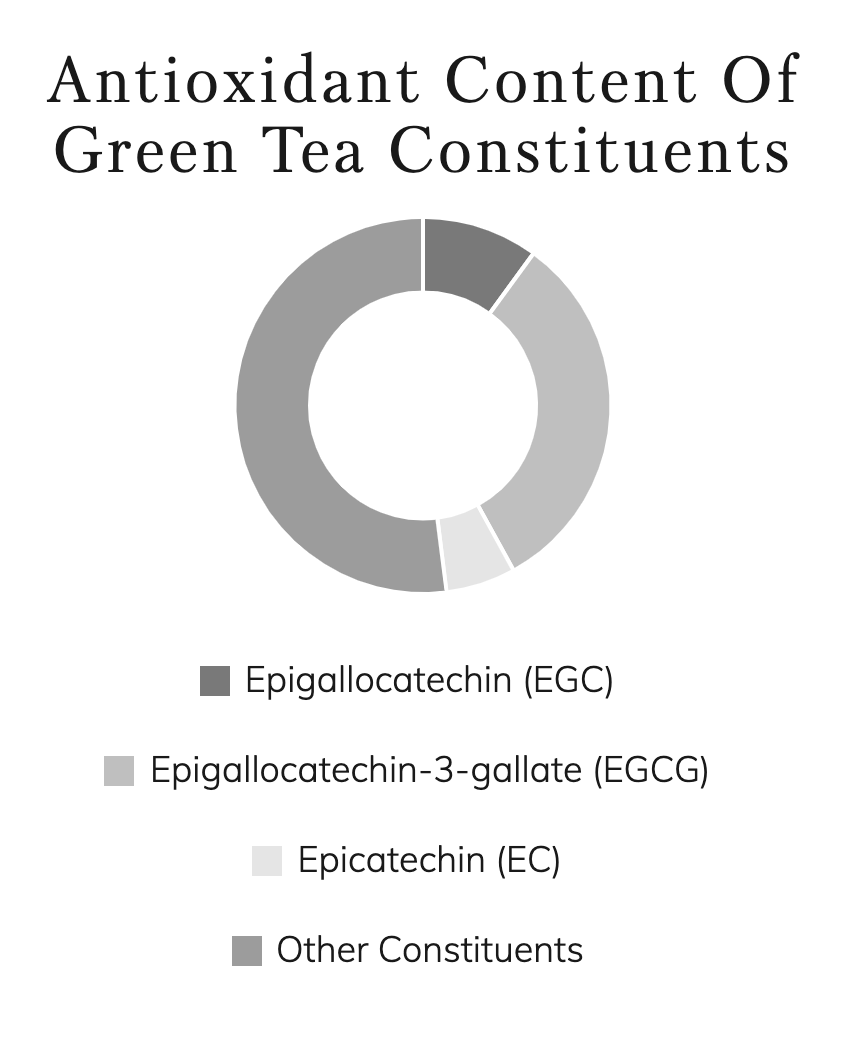









As COVID-19 continues to spread around the world, we’re getting a lot of questions on what the potential role of herbal medicine is during the outbreak. Learn how the virus works and how to limit your chances of transmission.